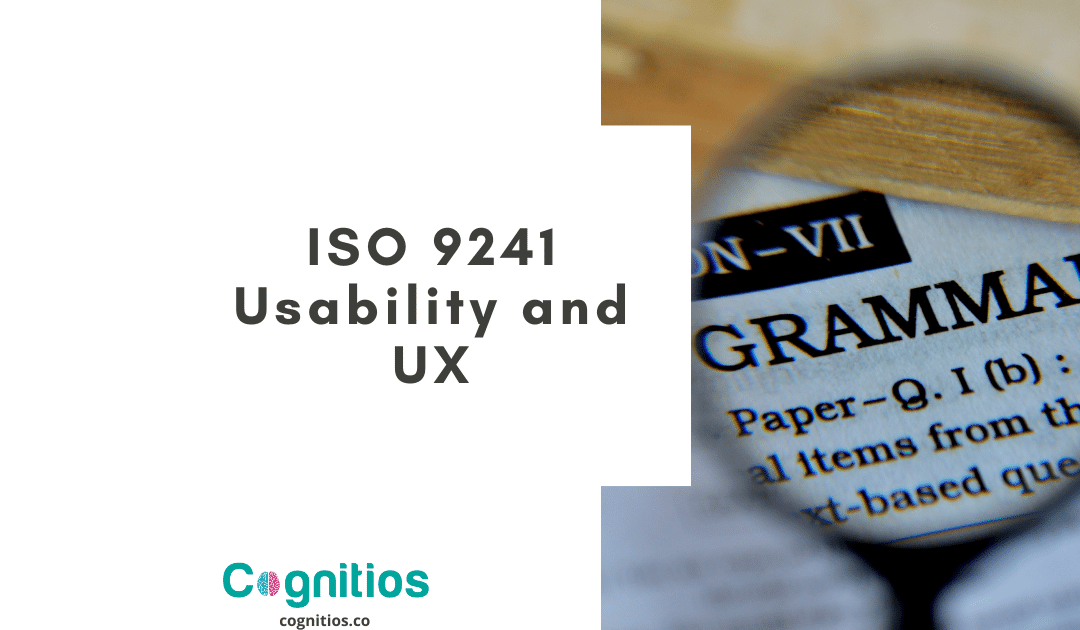The ISO 9241 standard refers to human-centered design, and one of the key points is usability. Usability is one of the most important aspects in recent years, and it is a consequence of the constant technological advancement and the desire to offer a product that helps to meet the user’s goals. There are many methods for the product design process (PDP), the selection of which one to choose often depends on the needs of the development team.


Improve effectiveness and efficiency, human well-being, user satisfaction, accessibility and sustainability.
Human-centered design is an approach to the development of interactive systems that aims to make usable and useful systems by focusing on users, their needs, requirements, and applying human factors, ergonomics, usability knowledge and techniques.
This approach aims to improve effectiveness and efficiency, human well-being, user satisfaction, accessibility, and sustainability, and also counteracts potential adverse effects of use on human health, safety, and performance.
Usability has been studied by several authors, and being a measurable quality attribute, it has allowed the creation of several methodologies and theories to study it. That is why the international standards organization ISO also has a standard to guide its application, ISO 9241, which defines the requirements and recommendations for design activities and interactive systems.
Adding a bit of history, before 2010 there were only recommendations based on the ISO 13407:1999 standard on ‘Human-centered design processes for interactive systems’, but since 2010 with the evolution of the technology sector and the digital industry, this went from just recommendations to include requirements in the new standard.
What is ISO 9241 about?
ISO/IEC 9241 is the quality-oriented standard on usability and ergonomics for products and services in technology, both software and hardware. Created by ISO and IEC (International Electrotechnical Commission), the two organizations also co-create the ISO/IEC 27001 standard.
ISO 9241 establishes the concept of usability as applied to interactive systems, but not a specific process in design evaluation.
The standard is divided into different parts that have a greater relevance depending on the product or service offered, for example, for hardware, ergonomics will have a greater impact and care, as well as for software to follow the standards oriented to user-centered design processes.
The updated version of this standard is independent of each part, for example, ISO 9241 part 210 has the latest version published in 2019.
The subjects into which the parts of the standard are divided are as follows:
Ergonomics, requirements for office work with visual terminals.
1, 2, 4, 5, 6, 9, 11, 12, 13, 14, 15, 16 y 17.
Ergonomics of human-systems interaction.
20, 100, 110, 129, 151, 171, 210, 300, 302, 303, 304, 305, 306, 307, 308, 309, 400, 410, 420, 910, 920.
Some of these parts are still in progress
143, 154, 310.
Evaluation methods for the design of physical input devices are planned for the future.
They will be the subject of Part 411.
The advantages of applying the guidelines of a standard like this are:
- In the case of ISO 9241 is a standard that does not say exactly how to design, most are requirements of what to consider and not the how, nor the why.
- A standard is defined by industry experts and industry best practices.
- Credibility, by following the guidelines of an organization that has international recognition in this type of quality-oriented guidelines.

Important concepts and requirements from the ISO 9241 standard for design to improve user experience and usability of digital products.
What is Usability?
ISO 9241 in its part 11 defines usability as “The effectiveness, efficiency and satisfaction with which specific users achieve specific goals in a particular environment”.
Effectiveness
The accuracy and completeness with which a specific user achieves a specific goal in a particular environment.
Efficiency
The resources consumed in relation to the accuracy and completeness of the goals achieved.
Satisfaction
The comfort and acceptability of the system by users and others who are affected by the use of the system.
ISO 9241 establishes the concept of usability as applied to interactive systems, but not a specific process in design evaluation. The parameters of the standard are:
- The design is based on explicit understanding of users, tasks, and environments.
- Users are involved during design and development.
- Design is driven and refined by user-centered evaluation.
- The process is iterative.
- Design considers the complete user experience.
- The design team includes multidisciplinary skills and perspectives.
Blog post about 10 things all of us need to know about UX (Spanish)
This standard does not stand alone and is related to other ISO/IEC standards that may complement other quality attributes or the quality of the product or service itself from other areas.
Although ISO 9241 will allow working with definitions and requirements, this standard (due to its high cost and length) is not always read in its entirety, instead it is used as a reference for already established definitions that can be used as a basis for delimiting concepts that may be subjective.
Tell us if you know the standard, and if in your area of work, it is part of your requirements to comply with it.

